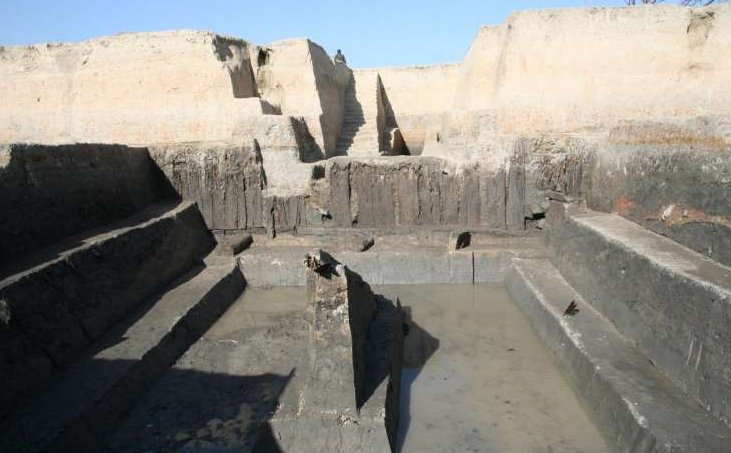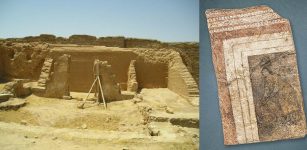Huge Ancient Hydraulic System Built By The Liangzhu Culture May Be World’s Oldest And Predate Mesopotamian Water Systems
AncientPages.com - A huge ancient hydraulic system discovered in China may be the world’s oldest and predate Mesopotamian water systems.
Ancient skilled Mesopotamian engineers constructed sophisticated water systems around 4,900 years ago and these have long been considered to the world’s oldest, but a recent archaeological discovery in China may re-write the history of engineering.
A structure of the Meirendi bank with wooden planks still standing upright. Credit: PNAS
The development of irrigation system in Mesopotamia was one of the major trails towards civilization and modernization. The irrigation systems in Mesopotamia unlike the modern irrigation systems had some major components like the canals, gated ditches, levees and gates. The water systems testified to the skills of Sumerian people.
However, scientists have used a combination of archaeological samples, remote sensing data, geographic modeling, and satellite imagery to analyze how the Liangzhu people managed the water in the Yangtze Delta between 5300 B.C. and 4300 B.C.
The Bianjiashan pier, wooden stakes still were preserved, forming a T shape. Credit: PNAS
The delta, which drains into the east China Sea, was underwater up until about 7,000 years ago.
Liangzhu Ancient City is located in a wetland environment, and all six city gates discovered so far are waterway entrances, linking the water networks outside to the one within.
See also:
Mysterious Pyramid-Shaped Tomb Discovered In China
Mysterious Great Pyramid Of China: Almost Totally Unknown Even To Most Chinese
According to Yijie Zhuang, who researches at the Chinese archaeology at the University College London the Liangzhu culture constructed large dams very quickly. A paper describing the findings was published December 4 in the journal Proceedings of the National Academy of Sciences.
Scientists say thousands of laborers moved more than 10 million cubic feet of earth to build the dams, in addition to what they describe in the paper as a network of artificial canals, ditches, and moats more than 18 miles long that supplemented the river's natural channels.
This is a map of the Liangzhu city and hydraulic system, Lower Yangtze River, China. Credit: PNAS
"The scale of landscape transformation at Liangzhu indeed was unparalleled in its era," the researchers wrote in their paper, "thereby opening a window into how such a system originated and developed largely in isolation."
The Liangzhu people inhabited the Jiangsu province of China, during the third millennium B.C. Archaeologists have unearthed many amazing objects in royal tombs, palaces and workshops.
All these ancient items offer evidence the Liangzhu people possessed knowledge of advanced ancient technology and produced sophisticated jade artifacts. One of them was the mysterious Jade Cong which is a perplexing ancient Chinese artifact. The purpose and function of the jade cong are still unknown.
Unfortunately, Liangzhu people did not have a system of writing and it seems clear there is still a lot we don’t know about this mysterious ancient culture.
AncientPages.com
Expand for references























